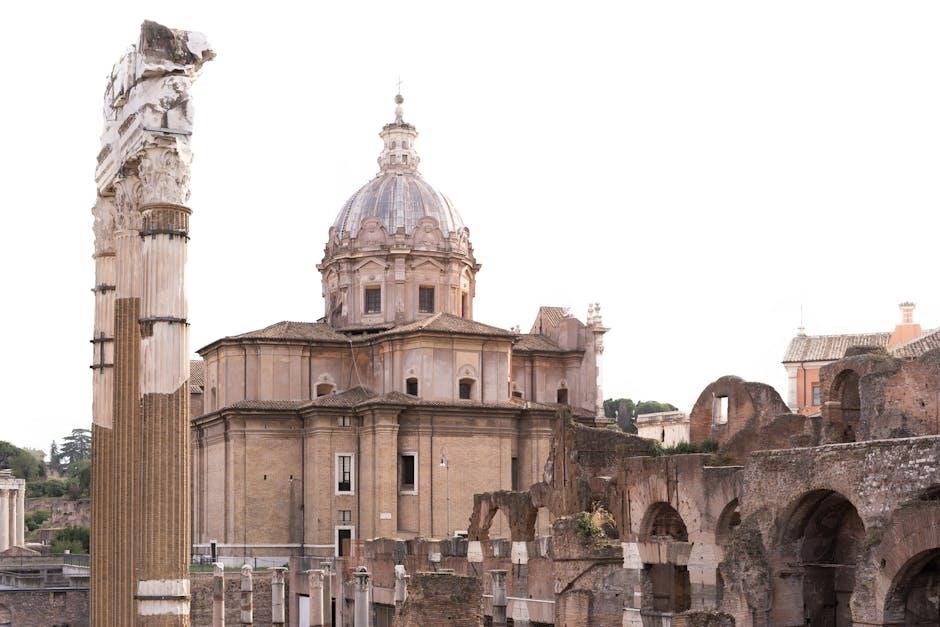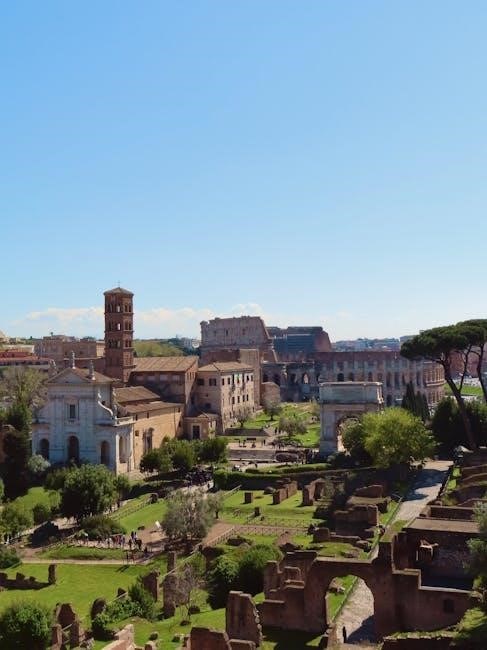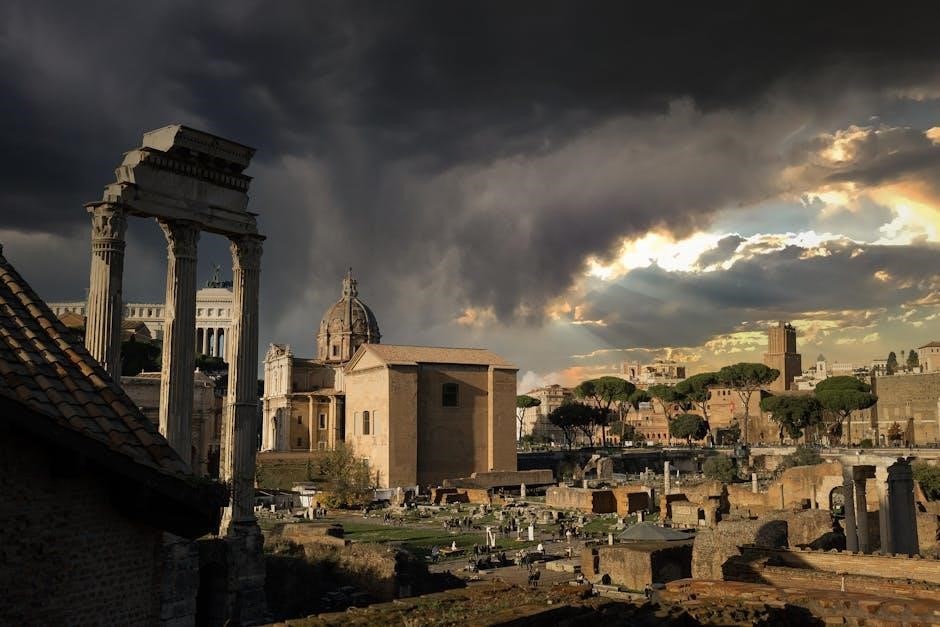Missale Romanum 1962 PDF: An Overview

The Missale Romanum (1962), also known as the Roman Missal promulgated by St. Pius V and reissued by Bl. John XXIII, is available online in PDF format. This edition holds significant historical and liturgical importance. Numerous resources offer downloads, enabling access for study and practice of the traditional Latin Mass.
The Missale Romanum of 1962, also referred to as the Missale Romanum issued by Pope John XXIII, represents a significant point in the Roman Catholic liturgy’s history. This version of the Missal, utilized in 1962 during Holy Mass, is the original Church Latin version, comprising over a thousand pages. It is a comprehensive liturgical book containing all the texts and instructions necessary for celebrating Mass according to the Roman Rite.
The 1962 Missale Romanum is particularly noted because it was the last edition published before the liturgical reforms that followed the Second Vatican Council. Many traditional Catholics continue to use this edition. This Missal includes the complete Order of Mass, along with propers for various liturgical seasons, feasts of saints, and votive Masses.
The Church Music Association of America (CMAA) has made this Missal available online in PDF format, providing access to a wider audience. This digital availability ensures that scholars, clergy, and laity can study and utilize this important liturgical resource, preserving its legacy in the digital age.
Significance of the 1962 Edition
The 1962 edition of the Missale Romanum holds immense significance within the context of Catholic liturgical history, primarily because it represents the final form of the Roman Rite before the sweeping changes introduced following the Second Vatican Council. This particular edition, promulgated by Pope John XXIII, became a touchstone for traditionalist Catholics who preferred the older liturgical forms. The 1962 Missal serves as a direct link to centuries of liturgical practice and tradition.
The importance of the 1962 edition was further amplified by Pope Benedict XVI’s motu proprio Summorum Pontificum, which acknowledged the right of priests to celebrate Mass according to the 1962 Missale Romanum, often referred to as the Extraordinary Form of the Roman Rite. This recognition underscored the continuing relevance and importance of the 1962 Missal within the broader Catholic Church.
Many see this Missal as a repository of sacred traditions and a symbol of continuity with the Church’s past. Consequently, the availability of the 1962 Missale Romanum in PDF format allows for its continued study, preservation, and use by those devoted to the traditional Latin Mass, ensuring its legacy endures.

Availability and Accessing the PDF
The Missale Romanum 1962 PDF is widely accessible through various online platforms. Websites like Musica Sacra and the Church Music Association of America (CMAA) host complete versions. These digital resources facilitate easy access for individuals interested in the traditional Latin Mass.
Online Sources for Downloading the Missale Romanum 1962 PDF

Several online sources offer the Missale Romanum 1962 in PDF format, catering to different needs and preferences. The Church Music Association of America (CMAA) is a prominent source, providing a complete version of the Missal. This version is often favored due to its accuracy and completeness.
Other websites, such as Musica Sacra, also host the 1962 Missal PDF. These sources may offer different versions or formats, including color scans or optimized files for specific devices. Some online libraries and digital archives may also contain the Missale Romanum 1962, often as part of larger collections of liturgical texts.
When downloading, it’s essential to verify the source’s reliability to ensure the PDF is complete and free from errors. User forums and online communities dedicated to traditional Catholicism often share links to reputable sources and provide recommendations. Checking file sizes and user reviews can also help identify trustworthy downloads. Always ensure that the downloaded file is safe and free from malware before opening it on your device. Using a download manager is advised for large files to prevent interruptions.
Free PDF Downloads and Resources
Numerous websites provide free PDF downloads of the Missale Romanum 1962, making this essential liturgical text accessible to a wide audience. The Church Music Association of America (CMAA) offers a well-regarded version, often cited for its completeness and accuracy. Other online repositories and traditional Catholic websites also host downloadable PDFs.
In addition to complete Missals, resources such as the Ordo Missae from the 1962 Missale Romanum are available as free PDF booklets. These booklets often include Latin and English translations, aiding understanding and participation in the traditional Mass. Some resources provide supplemental materials, such as tables of biblical readings and propers for different liturgical seasons.
Users should exercise caution when downloading from unfamiliar sources, ensuring that the files are safe and unaltered. Checking user reviews and verifying the source’s reputation can help mitigate risks. Many online communities dedicated to the traditional Latin Mass offer curated lists of reliable download links and resources. These communities can also provide guidance on using the Missal and understanding its contents. By utilizing these free resources, individuals can deepen their engagement with the rich liturgical tradition embodied in the Missale Romanum 1962.
File Size and Download Considerations
The PDF of the Missale Romanum 1962 typically has a substantial file size, often ranging from 70MB to over 300MB, depending on the scan quality and whether it includes color illustrations. Users should be aware of this large file size, especially when using mobile devices or connections with limited data. It is advisable to download the file using a stable Wi-Fi connection to avoid interruptions or data overage charges.
For users with slower internet connections, a download manager can be beneficial. Download managers allow pausing and resuming downloads, ensuring that progress is not lost due to connection issues. They can also improve download speeds by utilizing multiple connections. Before downloading, it is prudent to check the file’s integrity and source to avoid corrupted or malicious files.
After downloading, a PDF reader is required to open and view the Missal. Popular options include Adobe Acrobat Reader, Foxit Reader, and other free PDF viewers. Ensure that the PDF reader is up-to-date to ensure compatibility and security. The file size may also impact the device’s storage capacity. Users should confirm that they have sufficient space before initiating the download. Consideration of these factors ensures a smooth and efficient access to the Missale Romanum 1962 PDF.

Content and Features of the 1962 Missale Romanum
The Missale Romanum (1962) contains the complete liturgical texts for the celebration of Holy Mass according to the traditional Roman Rite. It includes propers for the liturgical year, feasts of saints, and various votive masses, all in Latin.
Language and Liturgical Use (Latin)

The 1962 Missale Romanum is predominantly in Latin, the traditional language of the Roman Rite. This reflects a historical practice that emphasizes the universality and continuity of the Church’s worship. Latin serves as a unifying element, transcending vernacular differences across various cultures and regions where the Roman Rite is celebrated. The use of Latin in the 1962 Missal maintains a connection to the historical roots of the liturgy and ensures a consistent textual tradition.

Liturgically, the Latin language provides a specific cadence and solemnity to the prayers and readings. The structure and grammar of Latin contribute to the reverent atmosphere of the Mass. The 1962 Missal, therefore, preserves the linguistic heritage of the Roman Catholic Church. Its continued use allows clergy and laity to engage with the liturgical texts in their original form, fostering a deeper understanding and appreciation of the Church’s liturgical traditions.

Moreover, the availability of the Missale Romanum (1962) in PDF format facilitates the study and use of Latin in liturgical settings. Scholars, clergy, and interested individuals can access and examine the texts, promoting ongoing engagement with this sacred language. This accessibility supports the preservation and transmission of the Latin liturgical tradition for future generations.
Key Components and Structure
The 1962 Missale Romanum is meticulously structured to guide the celebration of the Traditional Latin Mass. It encompasses several key components, including the Ordinary of the Mass, which contains the unchanging parts such as the Kyrie, Gloria, Credo, Sanctus, and Agnus Dei. These elements provide a consistent framework for each Mass, fostering a sense of familiarity and continuity across different liturgical seasons and celebrations.
Additionally, the Missal includes the Proper of Time, which varies according to the liturgical year, encompassing Advent, Christmas, Lent, Easter, and Ordinary Time. The Proper of Saints features specific prayers and readings for the feast days of various saints throughout the year, honoring their contributions to the Church.
The Missal also contains introits, collects, epistles, graduals, alleluias, gospels, offertories, secrets, communions, and postcommunions, each tailored to the specific day or feast. The Ordo Missae provides detailed instructions for the priest, ensuring proper execution of the liturgical rites. The structure of the 1962 Missale Romanum is designed to facilitate a reverent and orderly celebration of the Mass, reflecting the rich liturgical heritage of the Roman Catholic Church; Its availability in PDF format allows for easy access and study of its intricate structure and components.

Historical Context and Significance
The 1962 Missale Romanum marks a pivotal point in liturgical history. It stands as the last edition before the liturgical reforms of Vatican II. Its enduring relevance is highlighted by Summorum Pontificum, allowing its use in the Extraordinary Form of the Roman Rite.
The 1962 Missale Romanum in Relation to Summorum Pontificum

Summorum Pontificum, issued by Pope Benedict XVI, significantly elevated the status and accessibility of the 1962 Missale Romanum. This motu proprio affirmed the right of priests to celebrate Mass according to the 1962 Missal, referred to as the Extraordinary Form of the Roman Rite. This papal act recognized the enduring liturgical value and spiritual richness inherent in the pre-Vatican II liturgical tradition.
Summorum Pontificum emphasizes that the 1962 Missal was never abrogated, thus maintaining its legitimacy within the broader context of the Catholic Church’s liturgical patrimony. The motu proprio allows for the celebration of the Mass according to the 1962 Missal without requiring special permission, fostering a wider appreciation and use of this liturgical form.
The availability of the 1962 Missale Romanum in PDF format further supports the aims of Summorum Pontificum by providing easy access to the liturgical texts for both clergy and laity. This accessibility ensures that those who wish to participate in or study the Extraordinary Form can do so with greater ease and understanding. The relationship highlights a commitment to liturgical diversity.
The Missale Romanum before and after Vatican II
Before Vatican II, the Missale Romanum, particularly the 1962 edition, represented the standard liturgical text for the Roman Rite, embodying centuries of tradition and development. This Missal, rooted in the reforms of St. Pius V, provided a consistent framework for the celebration of the Mass worldwide. Its use ensured uniformity and continuity in liturgical practice.
The Second Vatican Council (1962-1965) brought about significant changes in the Catholic Church’s liturgical practices. Following the Council, a revised Missale Romanum was promulgated in 1969, introducing vernacular languages, revised prayers, and a restructured order of Mass. This new Missal aimed to promote greater participation and understanding among the laity.
After Vatican II, the 1962 Missale Romanum continued to be used in some circles, particularly by those who preferred the traditional Latin Mass. The 1962 edition became a focal point for those seeking to preserve the pre-Vatican II liturgical heritage. The availability of the 1962 Missal in PDF format facilitates its continued use and study, representing a tangible link to the Church’s liturgical history before the reforms.
